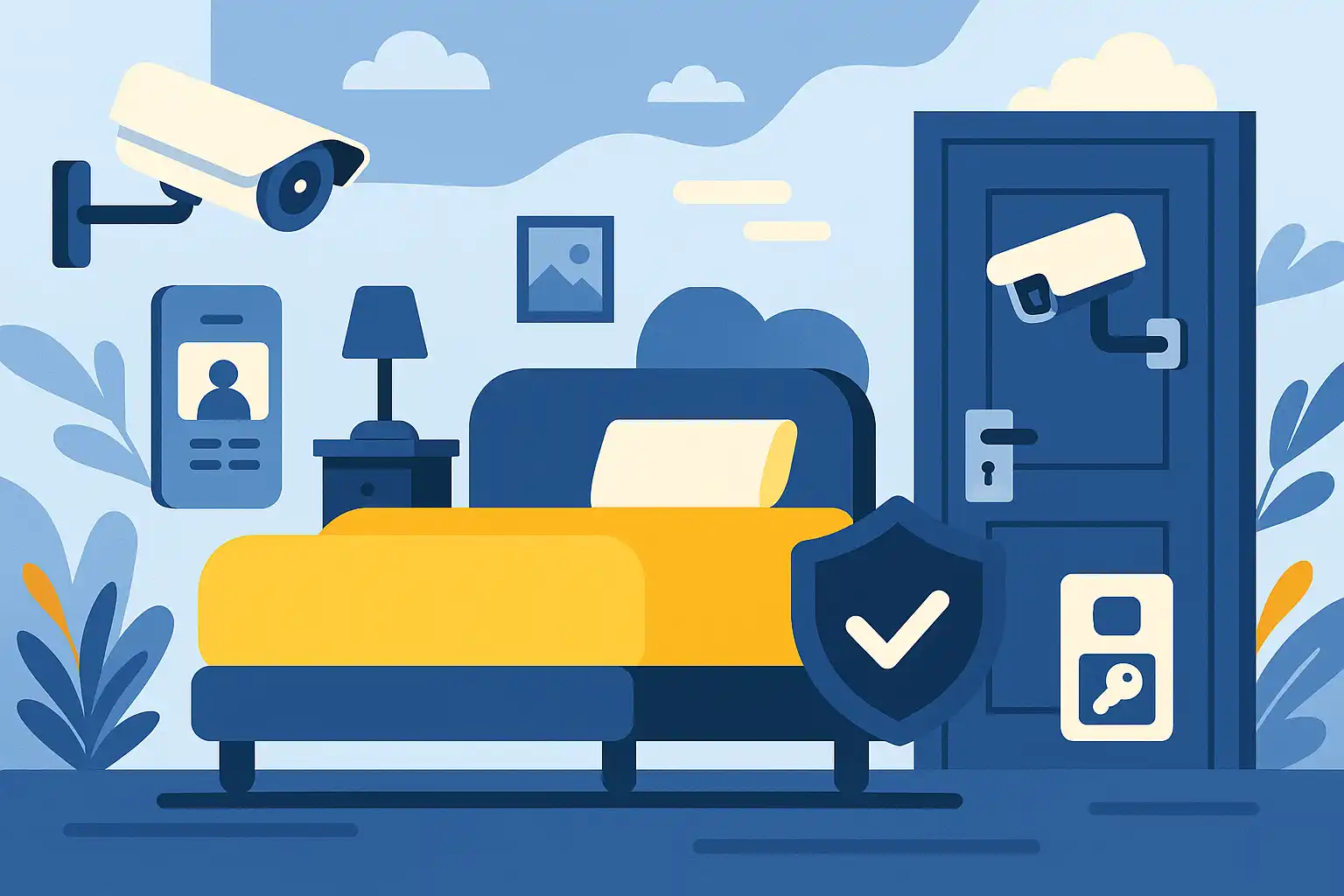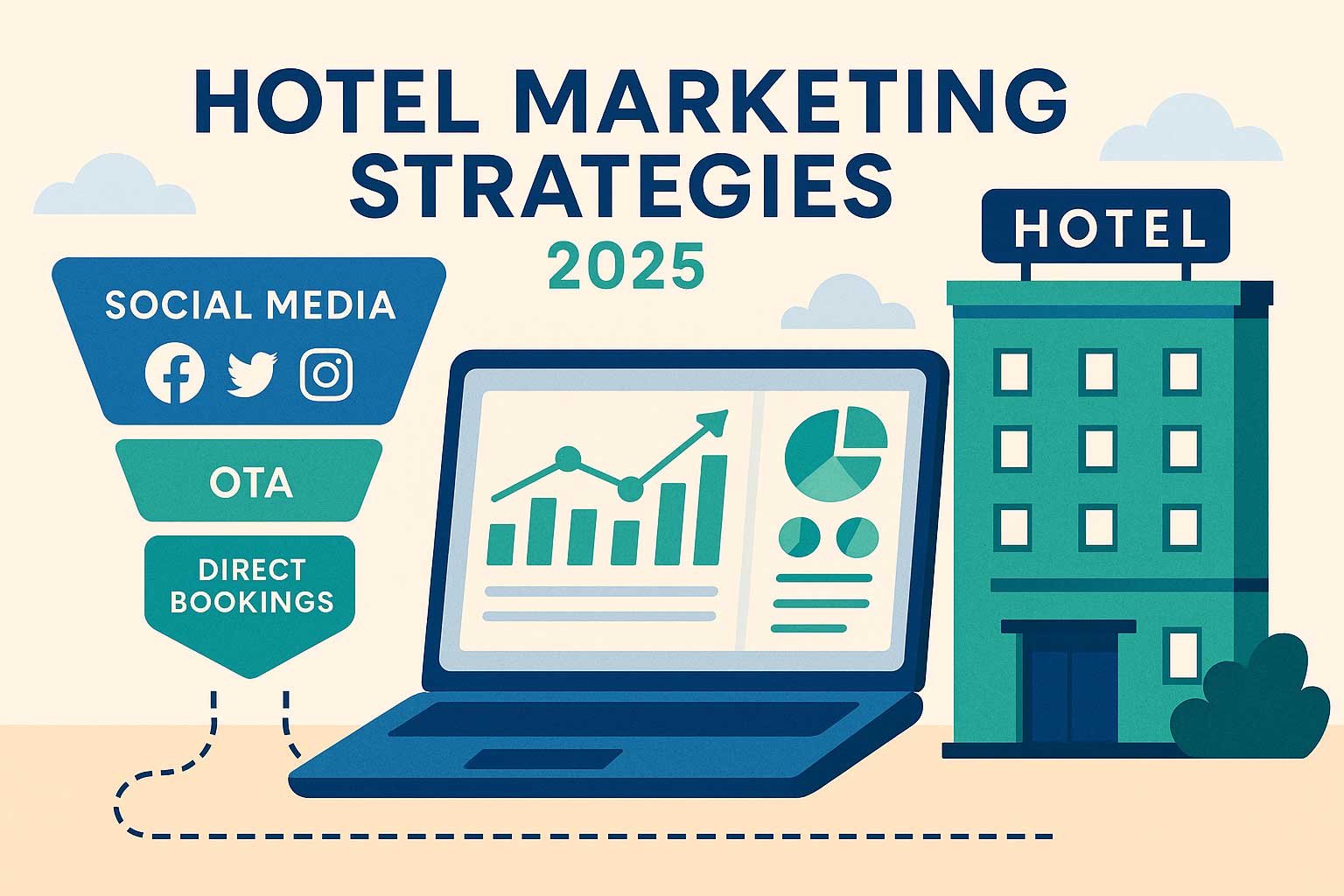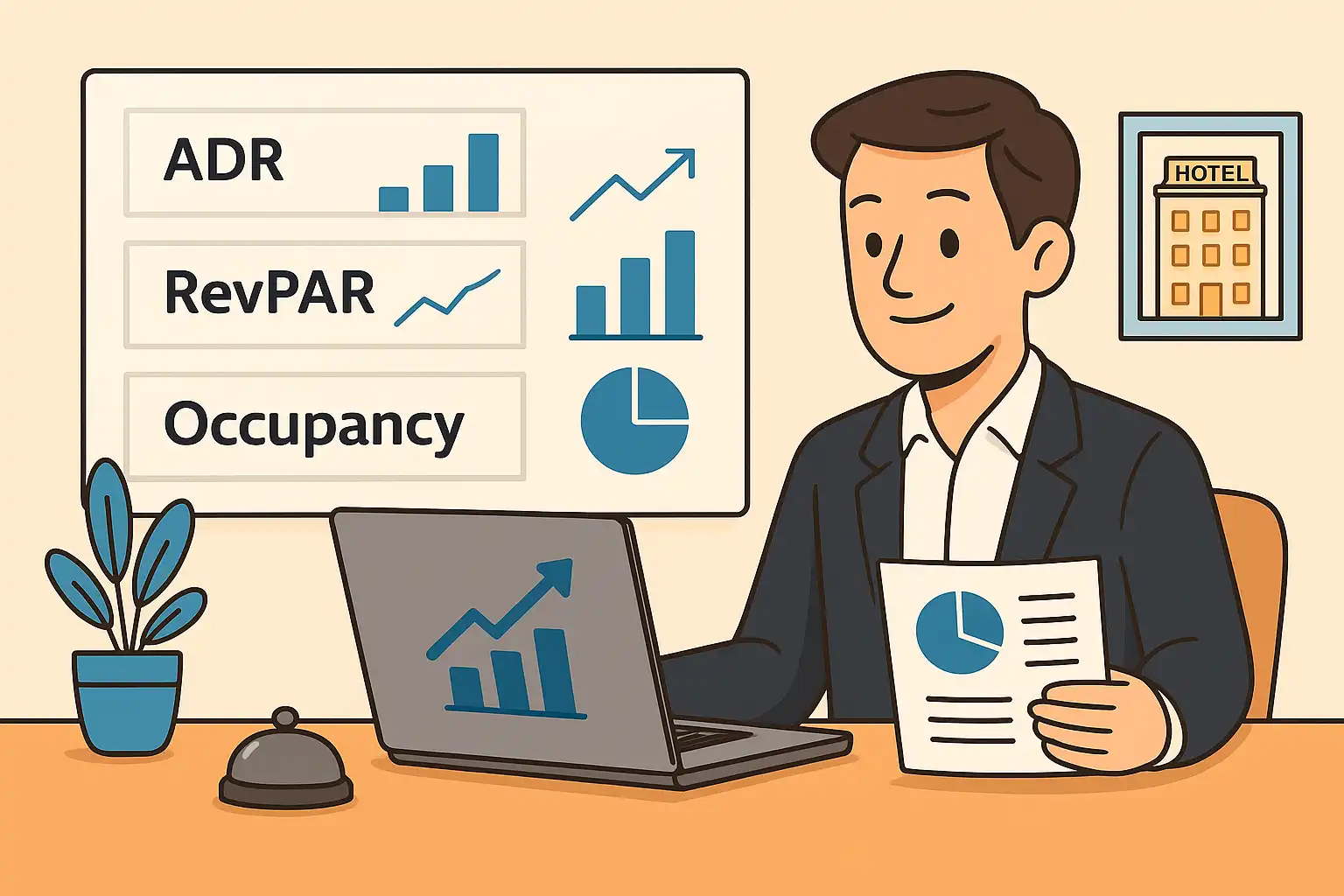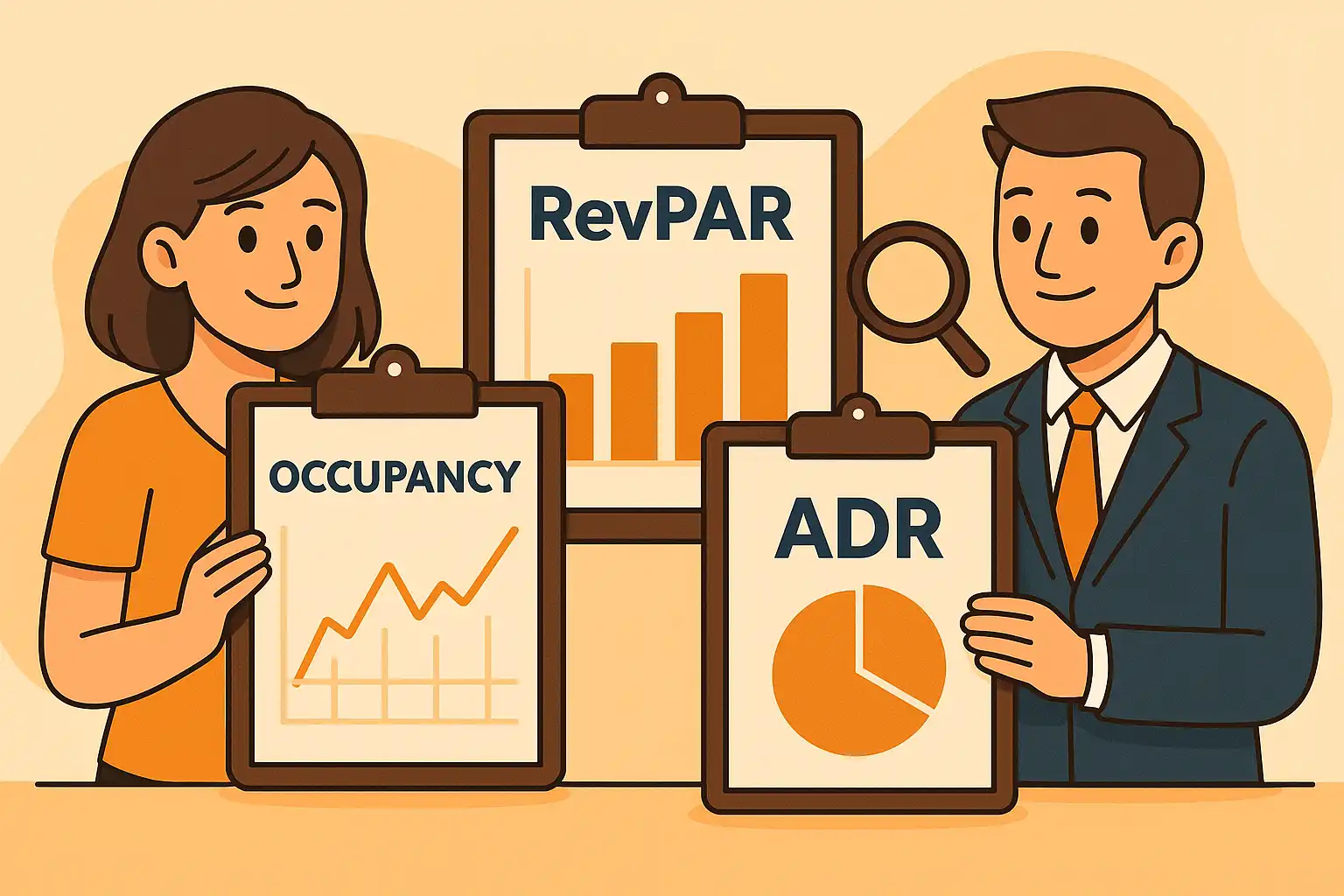Hotel Statistics: Essential Metrics Every Hotelier Should Track
Nov 13, 2025
 Mika Takahashi
Mika TakahashiPopular Categories
Hotel Technology & InnovationHotel Operations OptimizationDigital MarketingIndustry TrendsRevenue ManagementHospitality Industry
Popular Categories
Trending Post

Hotel Walk Letter Template: Professional Guest Communication

Online Travel Agents: What They Are and How They Work

Hotel Security Systems: Modern Protection Solutions

Hotel Advertising: Complete Guide to Boost Bookings and Revenue

25 Hotel Marketing Strategy Ideas for 2025: Complete Guide

AI Reservation Agent: Revolutionizing Hotel Booking and Guest Experience

PMS Communication: Streamlining Property Management Through Effective Guest Messaging
Table of contents
The global hotel industry pulls in over $1.8 trillion in annual revenue and makes up about $11.1 trillion of the world’s GDP—that’s roughly 10% of global economic output. Despite these eye-popping numbers, many hotel businesses still rely on gut feelings instead of solid data when making decisions. In today’s competitive hospitality sector, where margins are tight and guest expectations keep rising, tracking hotel statistics isn’t just helpful—it’s critical to staying in the game.
The way we use hospitality industry statistics has changed dramatically in recent years. Global events, shifting guest preferences, and new technology have all pushed hotels to rethink how they operate. Those who lean into data and technology consistently outperform their peers. For example, 91% of hotels report measurable growth thanks to insights from Property Management Systems (PMS). Heading into 2026, knowing which hotel statistics to track and how to use them is no longer optional—it’s essential.
This guide breaks down the critical hotel statistics you should monitor, the tools that make tracking easier, and the key trends shaping hospitality industry statistics in 2026. Whether you’re managing a boutique hotel, working for Marriott International, or running a luxury property, these insights will help you make smarter, data-driven decisions that boost revenue, improve operational efficiency, and create better guest experiences.

Why Hotel Statistics Matter for Your Success
Running a hotel today means working with razor-thin margins. Every decision—from pricing rooms to scheduling staff—can make or break your bottom line. That’s where hotel statistics come in. They give you the facts you need to optimize your operations and stay competitive.
Take revenue optimization, for example. Hotels using PMS driven data insights report growth in revenue of 15-25% in their first year. That’s not guesswork; it’s understanding guest preferences, forecasting demand more accurately, and adjusting prices in real time based on market data.
On the flip side, data-driven decisions can cut operational costs by 15-25%. For instance, by tracking housekeeping efficiency, one hotel reduced cleaning times by 20%, freeing up staff to focus on guest service. Another property saved thousands in utility bills by monitoring energy use per occupied room and adjusting accordingly.
Benchmarking your performance against competitors is another major benefit. Without clear data on occupancy rates, average daily rates (ADR), and revenue per available room (RevPAR), you’re flying blind. The most successful hotels monitor these numbers closely and tweak their strategies to stay ahead.
Here’s the kicker: advanced revenue management systems can boost RevPAR by 20-40% compared to static pricing. That means more revenue from the same rooms. And don’t underestimate guest satisfaction—hotels that track feedback and act on it see 20-30% improvements in repeat bookings and direct reservations, reducing reliance on online travel agencies (OTAs).
Investing in robust data analytics doesn’t just improve day-to-day operations; it also increases your property’s value. Allied Market Research shows hotels with mature analytics outperform market averages by 15-30%, making them more attractive to investors.
Core Hotel Performance Metrics You Need to Track
Tracking a handful of key metrics daily, weekly, and monthly can reveal trends and highlight areas for improvement. Here are the core hotel statistics every property should watch.
Revenue Management Metrics
The backbone of hotel industry statistics is revenue management. These numbers tell you how well your hotel is performing financially.
- Average Daily Rate (ADR), occupancy rate, and RevPAR are your primary KPIs. Globally, hotel occupancy averages 72%, but in the US, it’s around 63.4%. Cities like Las Vegas and New York hit 80%+ during peak seasons.
- RevPAR trends show seasonal demand shifts. In 2025, global RevPAR hit $112.50, up 15% from the year before. Hotels that track these trends can better time price changes and manage inventory.
- Gross Operating Profit Per Available Room (GOPPAR) goes beyond revenue to show true profitability by factoring in costs. Top properties maintain GOPPAR margins between 25-35%.
- Market penetration index and rate parity across booking channels help you capture revenue without sacrificing visibility or paying excessive commissions.
- Length of stay and booking lead time also matter. Post-pandemic, average stays dropped to about 2.1 nights, but booking lead times stretched to 35-40 days, up from 25 days before. Knowing this helps you plan staffing and cash flow.
Mini example: A mid-sized hotel noticed a drop in average length of stay but longer booking windows. By adjusting staffing schedules and offering midweek promotions, they improved occupancy and reduced labor costs.
Guest Experience and Satisfaction Metrics
Guest satisfaction directly impacts your revenue through repeat visits and positive reviews.
- Net Promoter Score (NPS) is a trusted loyalty indicator. Luxury hotels with NPS above 50 see 25-30% more repeat bookings.
- Online hotel review scores on platforms like TripAdvisor and Booking.com strongly affect booking rates. A 0.1-point increase in average rating can boost room revenue by 2-3%.
- Complaint resolution times matter. Hotels resolving issues within 24 hours achieve 80% service recovery success, compared to 45% when it takes longer.
- Repeat guest percentage and customer lifetime value help you understand long-term profitability. Repeat guests often spend 20-25% more over time.
- Mobile check-in and contactless services adoption rates reflect how well you’re meeting modern guest expectations. Properties with over 60% adoption report higher guest satisfaction and lower front desk labor costs.
Operational Efficiency Metrics
Efficiency saves money without sacrificing quality.
- Labor cost per occupied room and staff productivity are key. With 68% of hotels reporting staffing shortages, tracking these helps balance service quality with costs.
- Energy consumption per room is increasingly important. Hotels cutting energy use by 20% year-over-year save money and appeal to eco-conscious travelers.
- Housekeeping efficiency typically averages 12-16 rooms cleaned per 8-hour shift. Tracking this can highlight training or process improvements.
- Maintenance response times and predictive maintenance reduce equipment failures by up to 40%, avoiding costly repairs and guest disruptions.
- Food and beverage cost percentages and waste reduction are critical if you have on-site dining. Managing food costs between 25-35% of F&B revenue and cutting waste by 3-5% improves margins.

Technology Systems That Make Tracking Easier
Modern hotel operations generate a ton of data. The right technology helps you collect, analyze, and act on it without getting overwhelmed.
Property Management Systems (PMS)
Think of PMS as your hotel’s command center. These systems do way more than manage reservations.
- Platforms like Prostay, Oracle Hospitality, and Protel track bookings, guest preferences, costs, and staff productivity.
- They integrate with over 200 third-party tools, creating a unified data ecosystem.
- Real-time dashboards give you instant access to occupancy, revenue, and guest satisfaction metrics.
- Automated reporting saves managers 5-10 hours per week by generating daily, weekly, and monthly reports.
- Mobile access lets you monitor performance from anywhere, which is a lifesaver for multi-property operators.
Revenue Management Solutions
AI-powered revenue management tools are game changers.
- IDeaS, Duetto, and RevPAR Guru use machine learning to optimize pricing based on competitor rates, local events, and demand patterns.
- These platforms update market intel every 15 minutes, so you’re never caught off guard.
- Demand forecasting accuracy hits 85-92%, helping you plan staffing and inventory.
- Channel performance analytics show which booking sources bring the best guests.
- Dynamic pricing recommendations adjust rates based on 150+ market factors.
Business Intelligence and Analytics Platforms
These hotel business intelligence tools turn raw data into actionable insights.
- STR benchmarks your hotel against thousands of competitors worldwide.
- Kalibri Labs digs into channel and customer analytics for smarter distribution.
- Tableau and Power BI create custom dashboards for easy visualization.
- Google Analytics 4 tracks website performance and direct booking conversions.
- Social listening tools monitor brand mentions across 100+ platforms to catch trends and manage reputation.
New Hotel Statistics to Watch in 2026
The hospitality landscape keeps evolving. Here are the fresh metrics that will matter most this year.
Post-Pandemic Recovery Metrics
- Business vs. leisure travel ratio is shifting. Business travel is bouncing back to about 85% of 2019 levels, but leisure remains strong.
- Booking windows are longer, now 35-40 days, so cash flow planning needs to adapt.
- Contactless services are expected by 81% of guests, making mobile check-in and digital keys must-haves.
- Bleisure travel (mixing business and leisure) is growing, with 78% of business travelers blending both.
- Health and safety compliance remains a trust factor, with properties emphasizing clear protocols seeing 15-20% higher bookings.
Sustainability and ESG Metrics
- Hotels are tracking carbon footprint reductions with 2030 net-zero goals in sight.
- Water use per occupied room is down 20% year-over-year at properties with conservation programs.
- Waste diversion rates above 75% show commitment and cut disposal costs by 20-30%.
- Guests are willing to pay 38% more for sustainable accommodations, especially younger travelers.
- LEED certifications and green building standards help attract eco-conscious guests and investors.
Technology Adoption Metrics
- AI and automation deliver 15-25% efficiency gains in pricing, maintenance, and guest service.
- Voice technology in rooms reduces front desk calls by 12% and scores 85% guest satisfaction.
- Predictive maintenance cuts equipment failures by 40%, saving money and headaches.
- Direct bookings aim for 35-40% of total sales, reducing OTA dependency.
- Social media and influencer engagement boost brand recognition by 20-30%.
Market Intelligence and Competitive Analysis
Knowing your market inside and out is key.
- Track local market share monthly to spot trends and adjust strategies.
- Compare your pricing to hotels within a 3-mile radius to stay competitive.
- Assess impact of new hotel openings on demand and plan accordingly.
- Use event-driven demand analysis to maximize revenue during conventions and festivals.
- Monitor economic indicators to anticipate shifts in room demand.
The tourism industry’s recovery varies by region. International markets bounce back differently than domestic ones, and business travel is still catching up to leisure. Wellness tourism, now a $1.2 trillion global market, offers opportunities if you integrate spa, fitness, or healthy dining options.

Pro Tip: Start Small, Scale Smart
Don’t try to track everything at once. Begin with core KPIs like occupancy, ADR, and RevPAR. Once your team is comfortable, layer in guest satisfaction and operational metrics. This phased approach avoids data overload and builds confidence in analytics.
Myth vs Reality: Data Is Only for Big Hotels
You might think only large chains can benefit from deep data analysis. That’s not true. Even small boutique hotels can use PMS insights and guest feedback to boost revenue and improve service. The key is choosing tools that fit your size and needs.
Implementing a Data-Driven Hotel Management Strategy
To make hotel statistics work for you, set up regular reporting schedules—daily for operations, weekly for revenue, monthly for strategy. Use automated alerts to catch issues early. Train your staff to understand and use data in their daily roles. Test changes with A/B experiments instead of guessing. And build predictive models to forecast demand 90-120 days ahead.
Technology integration is crucial. Cloud-based PMS and analytics platforms offer better data flow and lower costs than older systems. Keep your team engaged by showing how data makes their work easier and more effective.
Conclusion: Your Data Edge in 2026
Hotel statistics aren’t just numbers—they’re your roadmap to smarter decisions and stronger performance. As guest expectations evolve and competition heats up, relying on solid data gives you a clear advantage. Start tracking the right metrics today, invest in technology that fits your property, and build a culture that values data-driven insights. That’s how you’ll thrive in the new era of hospitality.
Key Takeaways
- Hotel statistics drive revenue growth, operational efficiency, and guest satisfaction.
- Focus on core metrics: occupancy, ADR, RevPAR, GOPPAR, and guest feedback.
- Use technology like PMS, revenue management, and analytics platforms to simplify data tracking.
- Watch emerging trends: post-pandemic recovery, sustainability, technology adoption, and changing travel patterns.
- Start small with data, train your team, and scale your analytics efforts thoughtfully.
- Data-driven hotels outperform competitors and position themselves for long-term success.
